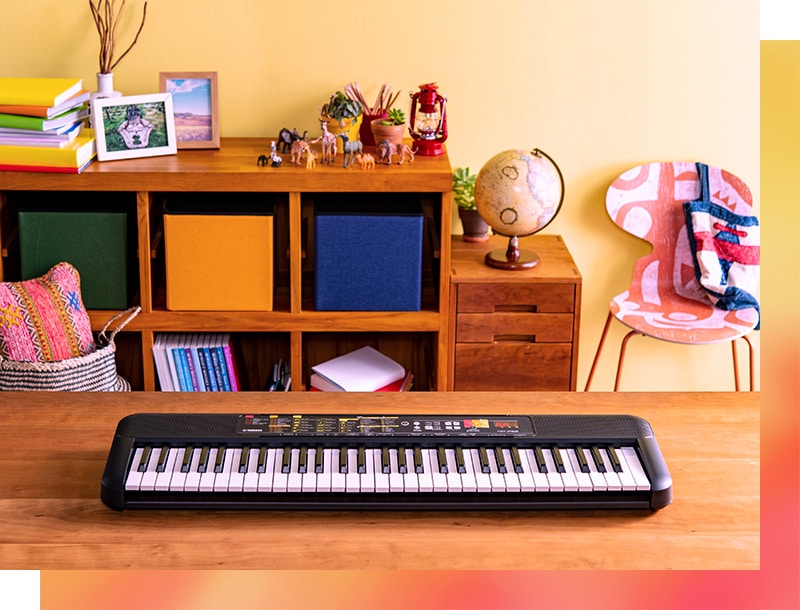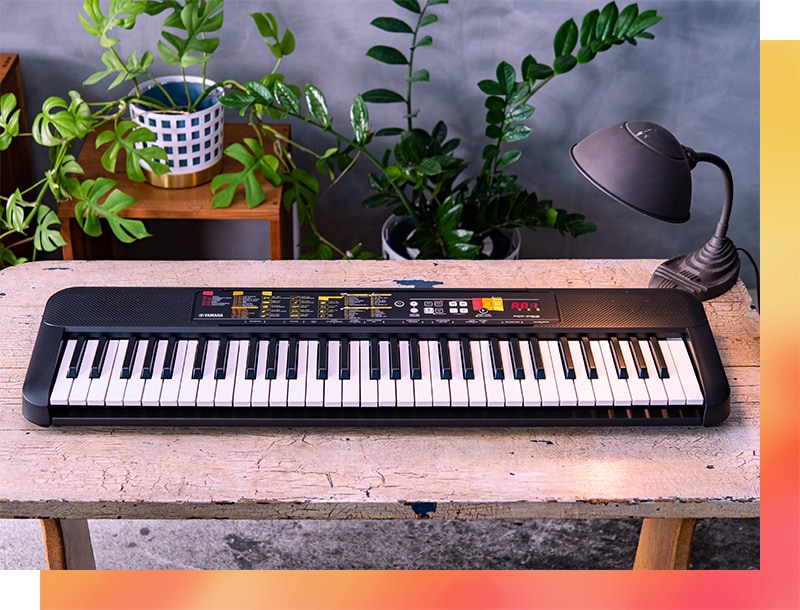RSP RM790 (West Malaysia) RSP RM870 (East Malaysia)
Intended for beginners, this keyboard features the characteristic instrument sounds and auto accompaniment Styles from many different countries.
- High quality keyboard
- 136 Voices (including 41 World Voices) + 8 Drum Kits (including 5 World Drum Kits)
- 158 auto accompaniment Styles (including 75 World Styles)
- 69 onboard Songs
- Free digital Song Book
- Various functions (Panel Sustain, Metronome, Sound Boost and more!)
- Light and compact
- Built-in speaker / Headphones jack
- AC adaptor / Battery
A keyboard for everyone to enjoy
The PSR-F52 is the perfect keyboard for people who want to learn to play. It has all the features you need for your first playing experience. What better way to try your hand at making music than on a keyboard made by world-renowned instrument manufacturer Yamaha? The PSR-F52 offers a solid foundation for anyone looking to start playing the keyboard.
Everything you need to start playing
Not only the pianos, guitars or wind instruments, the Yamaha PSR-F52 equipped with the instrument sounds (Voices) that are essentials to performing the music of many different regions. The auto accompaniment (Style) function delivers the fun of playing with a virtual band, and features variety of styles not only standard genres like rock or jazz, but also those that capture the essence of music beloved in many different countries.
Furthermore, the PSR-F52 is loaded with features for players of all experience levels. Free downloadable Song Book which has full of standard tunes, lesson videos, the Smart Chord function to enjoy the Style function without knowing how to play chords…and more!
This is a keyboard for everyone, no matter their experience or what style they wish to play.

A keyboard to enjoy with confidence
Important points when purchasing a keyboard include sound quality and user friendliness, but also confidence in the instrument’s safety, sturdiness, and durability. Our rigorous quality standards for withstanding the demanding needs of professional musicians, ample support, and broad lineup are all reasons that people around the world prefer Yamaha musical instruments.

Related Products
Accessories
* Specifications are subject to change without notice. The colors and finishes shown may vary from those on the actual products.

























